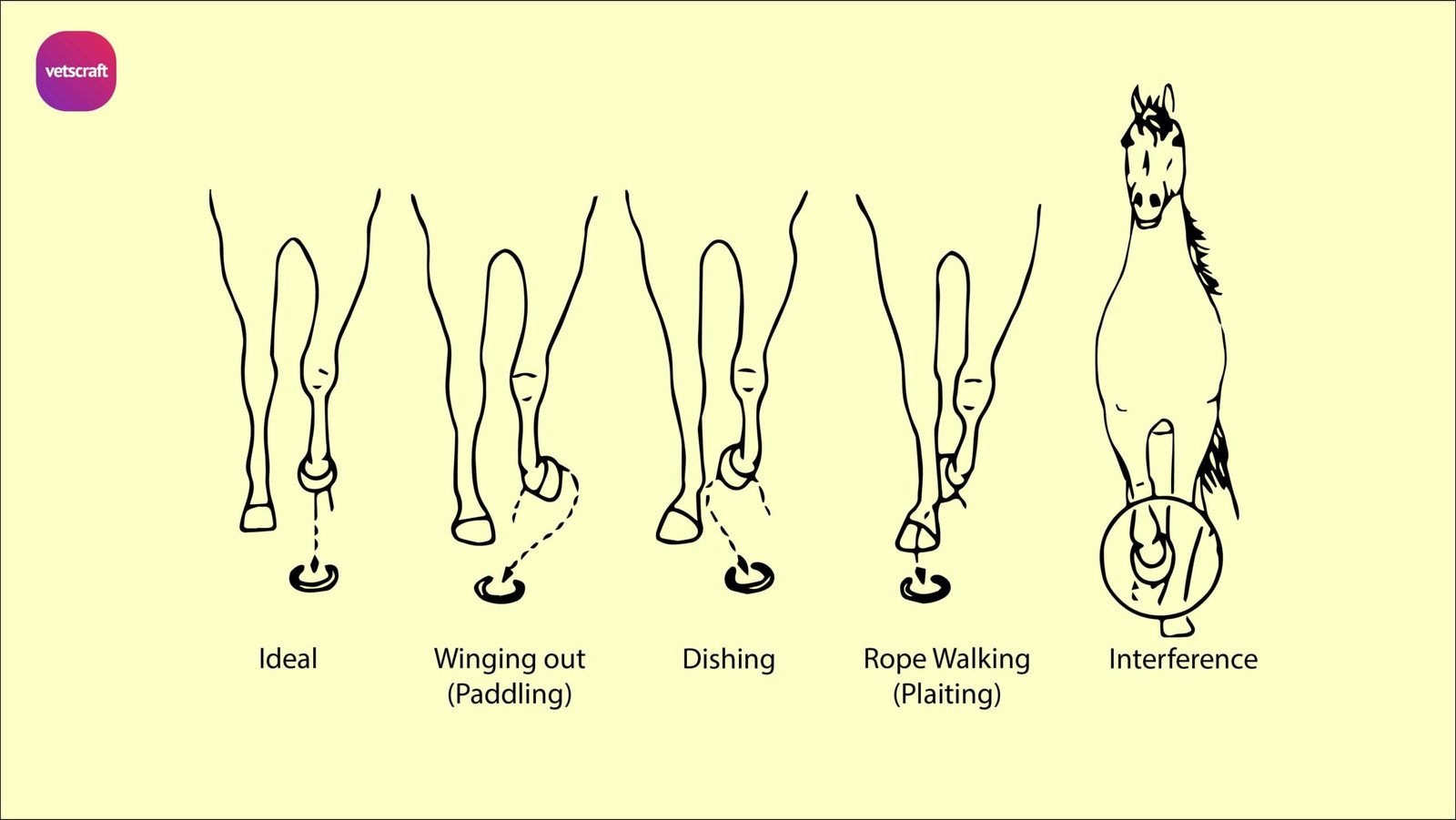Travel defects in horses
Travel defects in horses are important for assessing athletic movement and its important for a good horse.
The way the horse travels is the way the horse moves. Ideally, both the front and hind legs should move forward in a straight line. The back feet should travel in almost the same tracks as the front feet. The horse should move with a long, fluid, ground clearing stride rather than a short, choppy stride. This is the most efficient way of moving and it places the least stress on the limbs. Watch the horse’s feet carefully for how straight the horse travels and check the tracks left by the horse for signs of deviations in the horse’s stride. Such deviations may indicate a conformation fault, that may eventually cause a problem.
Assessing Athletic Movement
Athletic movement should not be confused with “way of going”. A horse’s athletic movement is determined by the lightness, rhythm and impulsion of his stride. Some horses can travel extremely crooked, yet possess a very light, rhythmic movement with tremendous impulsion.
Viewing from the front / rear
Winging Out (Paddling)
Winging Out (Paddling) is throwing the feet outward while in motion. This is usually associated with toe-in conformation.
Dishing (Winging in)
Dishing (Winging in) is throwing the feet inward while in motion. This is usually associated with toe-out conformation and is more serious than paddling since it may lead to interference when the horse moves.
Rope Walking (Plaiting)
Rope Walking (Plaiting) is twisting of the striding leg around the supporting leg so that the horse appears to be walking a tightrope. One forefoot may appear to land directly in front of the other. This is more serious than paddling since it may lead to interference and stumbling.
Interference
When one foreleg/hind leg strikes the opposite foreleg/ hind leg while in motion.

Viewing from the Side
Overreaching
Overreaching is the hind foot strikes the heel of the forefoot. If the horse is shod, the front shoe may be pulled off by the hind foot.
Forging
Forging is the toe of the hind foot strikes the sole or shoe of the forefoot while in motion.
Scalping
Scalping is the toe of the forefoot strikes the coronet band of the hind foot.